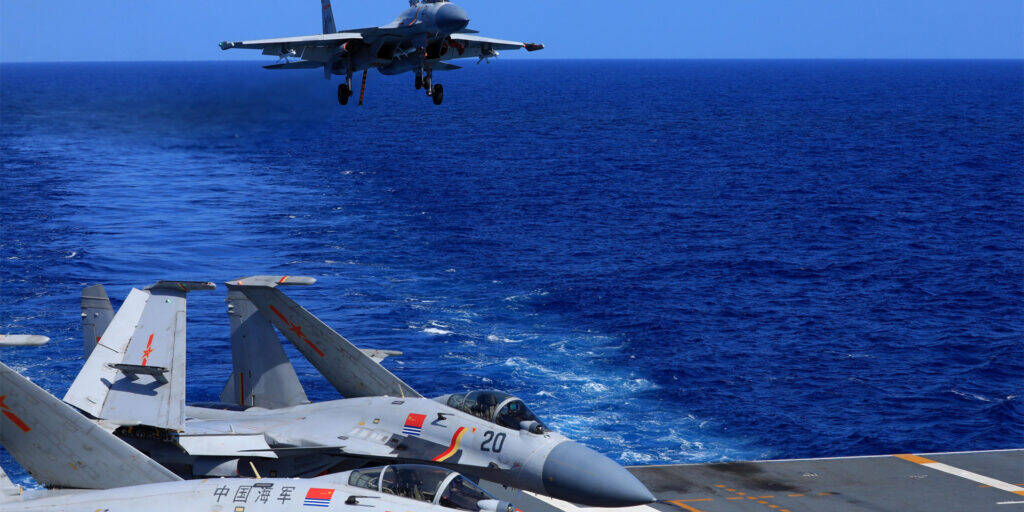Ahana Roy, for Pacific Forum
A year ago, the four leaders of the Quadrilateral Security Dialogue (“Quad”) convened in Tokyo and released a joint statement launching the Indo-Pacific Partnership for Maritime Domain Awareness (IPMDA). This initiative’s primary objective is to enhance maritime security and domain awareness by equipping Indo-Pacific nations with emerging technologies and training support to enhance their real-time maritime awareness capabilities. Though not explicitly stated, this initiative’s aims to combat illicit maritime assertiveness and maintain the regional status quo are aimed at China. However, the idea of the IPMDA as a purely anti-China initiative causes concern for regional states who wish to partake in the initiative, consequently creating further challenges for effective implementation.
Consequently, a year later, the IPMDA remains in its nascent stage, despite heavy media coverage and multiple statements by Quad governments. Notwithstanding strong concerns over China’s militarization of the Indo-Pacific region, exploitation of offshore resources, and the presence of maritime militia, the IPMDA’s progress has been inadequate. Quad countries must take into account a number of factors for the successful operationalization of this partnership. Furthermore, for this initiative to succeed, Quad countries must reassure others in the region that it is meant to be inclusive, not focused exclusively on constraining Chinese activity. The inclusivity aspect is necessary to combat the perception of regional partners that the IPMDA is only directed at deterring China’s maritime manoeuvres in the region, since most regional states do not share an interest in constraining China.
What is IPMDA?
The IPMDA provides a common framework to operationalize the maritime strategic partnership among Quad countries and their Indo-Pacific partners. Essentially, the IPMDA initiative focuses on monitoring regional maritime spaces, securing open sea lines of communication (SLOCs), and providing capacity-building measures for regional partners. The initiative’s explicit call for maritime domain awareness supplements the Quad’s implicit strategic interest in curbing Chinese belligerence in the region, especially the South China Sea.
Officially, the IPMDA offers “near-real-time, integrated, and cost-effective maritime domain awareness” to partners in the Indo-Pacific. It aims to combat challenges from natural disasters to human and weapons trafficking to illegal, unreported and unregulated (IUU) fishing and dark shipping. To tackle the challenge of vessel identification, the initiative will employ a commercial satellite-based tracking service that would enable countries to counter dark shipping—vessels operating with their AIS (automatic identification systems) transponders turned off—and successfully deliver a “faster, wider and sharper” maritime picture of regional partners’ exclusive economic zones and prevent illegal activities in ungoverned maritime spaces. Furthermore, the initiative will make use of partners’ existing Information Fusion Centers, such as those in India, Singapore, Vanuatu, and the Solomon Islands (who, notably, signed a security pact with China in April 2022) for information-sharing. This real-time maritime intelligence gathering and dissemination would pave the way for an effective multilateral collective security apparatus reflecting the national maritime strategies of like-minded Indo-Pacific states.
The IPMDA is not the first US-led maritime security framework, but it is the first time the United States has incorporated Southeast Asian, the Pacific Island, and Indian Ocean region countries into a single structure. However, East Asia has not been included (perhaps due to the fact that the United States and Japan already have a well-oiled maritime domain awareness mechanism in the East China Sea). Furthermore, the IPMDA fails to cover the western Indian Ocean region and island nations like Seychelles and Mauritius. Exclusion of these regions’ geographical scope leaves a fractured maritime domain awareness picture in the Indo-Pacific, as it does not comprehensively take into account all Quad partners’ maritime concerns. For example, India’s maritime security concerns of open and secure SLOCs, piracy, terrorism, IUU fishing, and weapons trafficking in the western IOR are not accounted for under the IPMDA’s purview. This showcases that while the IPMDA covers more ground than its predecessors, limitations detrimental to effective maritime domain awareness remain.
How can the IPMDA progress?
For the IPMDA to succeed, all participating countries must commit to bridging the extensive gaps in current information-sharing, capacity-building, and coordinated action practices, as well as resolving challenges like technology interoperability, resource accessibility, and vessel identification. The IPMDA is crucial as a deterring mechanism for illegal activities in maritime spaces; for promoting a rules-based international order in the high seas; for providing low-cost surveillance technologies to regional partners with limited resources; and for strengthening maritime cooperation and dialogue with stakeholders.
Quad countries must look into the several bottlenecks the IPMDA will face. Vessel identification is a persistent issue—vessel identification in itself requires significant data and many Indo-Pacific countries are ill-equipped to police their territorial waters effectively. To tackle this issue, the IPMDA must employ a twin-pronged approach: investing in publicly available information-sharing systems and identification technologies, as well as training maritime law enforcement personnel to remotely patrol and surveil international waters. The IPMDA must also consider the issue of asymmetrical resource accessibility and asset management by partner nations. To mitigate this, the Quad countries should equip maritime domain awareness collaborators with interoperable technologies like radar systems and data regulation processes and undertake multilateral maritime exercises in the region to demonstrate joint capability. Policymakers and security strategists must also balance their interests of maintaining a free and open Indo-Pacific with that of constraining China’s antagonistic presence in the Indo-Pacific to not stretch the bandwidth of partner nations.
There is still a long way to go in actualizing the IPMDA in an inclusive and sustainable manner. For the effective implementation of the maritime domain awareness picture, Quad countries must tackle concerns which can potentially burden partners in the Indo-Pacific region. No nation would want to needlessly invoke the ire of China, but many are interested in alternatives to Beijing’s assertive presence in the Indo-Pacific region when it serves their national interests and promotes shared maritime principles.
Quad countries must consider that countries in the Indo-Pacific are driven by pragmatic concerns vastly differing from each other, especially in the face of the China threat. For example, within the ASEAN itself, countries like Indonesia and the Philippines have different concerns related to China. Indonesia and the Philippines have had joint naval exercises with the United States, but Indonesia’s approach to the Indo-Pacific is based on the notion of ASEAN centrality and inclusivity—including China, in contrast to the US Indo-Pacific strategy. All partners must find commonality, and on multiple levels, to effectively implement the IPMDA.
In lieu of attempting to carve a new mechanism to deploy the IPMDA, Quad countries should work with existing regional collaboration institutions to successfully implement a maritime domain awareness strategy. For example, while the IPMDA specifies which information-sharing centers will be used for data collection on maritime activities, there is no mention of building linkages with existing information-sharing centers, like in Madagascar. Similarly, for an organization like ASEAN, which must balance dealing with both China and the United States (and by extension the Quad), a focus on capacity-building and developing human capital through the IPMDA will only serve its own interests. On the other hand, the initiative would reassure Southeast Asian countries of the Quad’s commitment to promoting regional maritime security as well as pave the way for them to regard the IPMDA’s objective of building capacity as genuine, and not just a façade for Quad partners to act on anti-Chinese sentiments.
Although the Quad’s IPMDA initiative is a step in the right direction, it is too early to determine its efficacy. The Quad must begin immediate engagements with regional stakeholders to address deficiencies in the current IPMDA initiative and support holistic and robust maritime domain awareness in the Indo-Pacific. What remains to be seen is how swiftly member nations can come together for this initiative, which will determine its efficacy. How the IPMDA will impact regional security dynamics, and how China will respond to such a multilateral initiative, are a few of the many questions requiring further examination.
The original article can be found here at the Pacific Forum.
Author:
Ahana Roy (ahana.1604@gmail.com) is Research Associate at Organisation for Research on China and Asia (ORCA), New Delhi.
Feature Image: Prime Minister’s Office of Japan, via Wikimedia Commons


